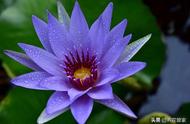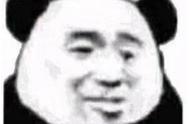译文简介:不确定是什么原因,最近在头条发的几篇文章都没有审核通过。我在翻译的过程中已经尽量屏蔽掉了比较敏感的信息了,可能是自己的行文风格,翻译质量得不到头条的认可吧。
自己个人本身比较喜欢闲来无事逛逛国外的论坛,关注国外的一些时事新闻。有些网友对这块也比较感兴趣,但是由于国内的一些特殊原因没有一个好的渠道来了解这方面的信息。
所以后续我尽量发一些不会涉及敏感信息的文章/评论,希望能让更多的国人了解世界各国发生的事,以及对事情的看法和不同观点。
另外,大家可以对自己比较感兴趣的话题下方留言或者私信给我,我尽量抽时间选取相应的题材进行翻译。
中国人、日本人和韩国人有什么不同?外国网友:如果从欧洲的视角来看,也许你会很奇怪中日韩三国居然不是一个地区。他们也是有着不同人种,不同的文化和价值观。东亚地区有一定的基因交流,但远远没有欧洲邻国之间那样的频繁,语言也没有太大的相关性。
评论翻译:Think about it this way. If, instead of dozens of countries, there were onlyIreland, Sweden, and Greece separated by mountains and oceans in Europe, wouldyou be able to tell them apart most of the time? If you saw someone with redhair, someone with blond hair, someone with curly hair and dark skin, whatwould you think? It's like that. It's not enough to go on to be right all thetime, but it's enough to have a stereotypical mental image of what eachpopulation's people look like.
这么滴想,如果在欧洲高山和海洋之间不是几十个国家,而是只有爱尔兰、瑞典和希腊,你能随时分辨出来他们的人吗?如果你看到有红头发的人,金黄色的头发的人,卷发和黑皮肤的人,你会怎么想?就是这样,这幅典型的心理图像可能不够精确,但是足够直观描述了各个种族的人的长相。
But it's more than just a stereotype. The following image is from Dieneke'sAnthropology blog. It's actually the most popular image on the site.
不过它不仅仅是一个刻板印象。图来自于人类学家Dieneke的博客,它是在互联网上最知名的图像。

This image is a composite of, from left to right, Chinese, Korean, and Japanesewomen. To me, the most noticeable thing about that composite image is thedifference in skin tone, but the general shape of the face and the hair is alsodifferent.
从左到右,是中国,韩国,日本女性形象合成图。对我来说,最明显的差异是合成图像的肤色,但脸和头发的形状也各有不同。
This is a cluster analysis from Dieneke's Anthropology blog which shows how theChinese, Japanese, and Korean people fall out genetically:
这是来自于人类学家Dieneke的博客的一个聚类分析,分析显示了中国人,日本人和韩国人的遗传基因。

As you can see, there's a lot of genetic variability in China, reflecting thefact that it's a big, multiethnic country, a fair amount in Japan, whichstretches from the Ryukyu Islands to Hokkaido, and the people of Korea are insomewhere in between, but tightly clustered so that they don't overlap witheither.
正如你所看到的,中国人有很多的遗传变异性,反映的事实是它是一个庞大的多民族国家;而大量的日本人分布在琉球至北海道(这怎么看出来的?);韩国人介于两者之间,紧密聚集;所以东亚人之间并不重叠。
One of the reasons we don't notice this is that Hollywood casting agents reallydon't care about the difference. They seem to especially like to cast Koreanactors as Japanese characters.
我们没有注意到的原因之一就是,好莱坞星探们不关心东亚人的区别。他们似乎特别喜欢让韩国演员演日本人物。
This image is Zhang Ziyi in makeup and costume in the movie Memoirs of aGeisha.
这是章子怡在在电影《艺伎回忆录》的定妆照。

The movie caused a big stir in Japan and China because, to a movie goingaudience accustomed by long exposure to telling the different between Japaneseand Chinese actors, Zhang Ziyi, so obviously and conspicuously Chinese, wasmiscast. That is, American eyes might look at this picture and think, What'sthe big deal? They're both Asian. Memoirs of a Geisha might havegotten away with it if it was just one character. But all three of themain geishas were cast with Chinese or Malayo-Chinese character actors. If"Asian" isn't a relevant category for you, this is no better thanPeter Lorre as Mr. Moto.
这部电影在日本和中国掀起了讨论,因为电影观众受长期以来放映电影的影响,他们认为中国人和日本是有很大区别的,而章子怡作为一个百分之百的中国人(去演日本人),这是角色分配不当。但是,美国人看到这张照片可能会想,这有什么大不了的,他们都是亚洲人。如果《艺妓回忆录》中只有一个角色是这样,那么它还有可能不让人诟病。但是,所有的三个主要的艺妓角色都是由中国人来演的。如果东亚对你来说并不是一个整体,那么这比彼得罗演Mr. Moto好不到哪去。
On the other hand, Korean actress Jun Ji-hyun did a pretty good job of playinga Japanese character in Blood: The Last Vampire. Although she doesn'tlook like the typical Japanese girl, I think she looks passably Japanese,perhaps from somewhere in the north. Ignore the blue eyes. Those are a vampirething.
相反的,韩国女演员JunJi-hyun在《最后的吸血鬼》这部电影里演一个日本人演得很好。尽管她看起来不像典型的日本女孩,我觉得她起码看起来有那么点像,可能是北方某个地方的日本人。别扯蓝眼睛,那是吸血鬼的妆。

I do not think these facial differences, ifany, are that relevant. Or, to say it otherwise, the differences betweenSouthern Chinese and Northern Chinese are far greater than differences betweenNorthern Chinese and Japanese, so they are not a useful tool to tell themapart.
我觉得这些人面部差距并没有差别,即是有的话,那也不是人种之间的差别。这么说吧,中国北方人和中国南方人之间的差别远比北方人和日本人之间的差别大,所以靠长相区分他们不是个容易的活儿。
An academic case can be made, but in practice any differences there may be arenot significant enough to be noticeable.
学术上来说,差异可能存在,但实际上还是难以察觉的不明显。
The way most people tell apart Chinese, Korean and Japanese is just by theclothing, the behavior, the haircut, and many other external signs that aremuch easier to detect.
区分中日韩三国人只能靠衣着,习惯,发型和其他容易区分的外部特征。
It is the same when you try to tell apart British and French people, theirclothes and haircut and the way they walk, they move their hands, they look atother people will tell you much more than merely the color of the hair or thefacial features.
当你区分英国人和法国人也一样,衣服、发型、走路方式、手势,这些特征比他们的头发和长相能够告诉你更多信息。
This is an Interesting contrast to anarticle I read a couple of years ago that indicated that in fact it is rarelypossible to distinguish Koreans, Japanese and Chinese (Northern) by facialfeatures. There was a test where 100 Asian students at UCLAwere askedto guess what nationality people were from a group of photographs. Prior to thetest, most of them were confident that they would have no trouble answeringcorrectly, but the results were interesting - they showed that the participantswere no more accurate than somebody answering randomly. In other words, theywere actually completely unable to guess the nationality correctly!
我几年前读过一篇文章,文章特别想通过长相区分出中国北方人、韩国人和日本人。有研究者曾经对加州大学洛杉矶分校的100位亚裔学生做过测试,他们被要求从一组照片中区分人的种族。测试开始之前,他们觉得答对毫无压力,但有趣的是,参与者照片的正确率并不比随机挑选的照片高。换句话说,他们自己都分不出来。
I'm not expert at all, but judging from my own observations, I see these differences:
Koreans have usually more rounded faces, flatter, with high cheekbones. And their skin color is very light.
Japanese are similar but their faces are not that flat. They usually have softer features. Okinawans have darker skin though. Although not very common, it's possible to see Japanese men with some facial hair and even mustache, which is unlikely in other Asians. I wonder if Ainu genes have something to do with it.
Han Chinese are usually slim and their eyes are more slanted. I ignore about other Chinese nationalities, but I've seen some darker ones in Guangzhou. I guess they were migrants from other regions.
我也不是个专家,但是根据我的观察,差别如下:
韩国人通常脸更圆,更扁,高颧骨。而且他们的肤色很白。
日本人差不多,但脸并不扁平。他们通常有些小特征。冲绳人皮肤黑,虽然不是很常见。经常可以看到日本男人面部的毛发甚至是络腮胡,这在其他亚洲人脸上不太可能。我猜这是阿依努人的基因。
汉族人比较苗条,他们的眼睛更有斜度。我忽略了其他的中国民族,但是我经常在广东看到一些皮肤比较黑的人。我猜那些人是别的地方的移民。
There are some hair styles, beard styles and fashion styles among Japanese and Koreans that I rarely see in China. Apart from that, I see no sure way to tell them apart just by facial difference only. If a Korean or a Japanese were to wear some plain clothing and a simple hair style, I wouldn't be able to tell them apart from the people I see in my neighborhood in China. That is before they utter a word, because it's far easier to distinguish them by accent.
日本人和韩国人有一些发型,胡须风格以及时尚很少出现在中国人身上。除此之外,我很难通过长相区分他们。如果韩国人或日本人发型和服饰非常简单,那么我就没办法把他们和我在中国时的邻居区分开了。但那是在他们张嘴之前,如果通过口音区分还是很容易的。
I can often tell who is Japanese, but I cannot tell it without dress and expression.
In fact, Chinese gene pool is a super set of Japanese, Korean, Vietnamese gene pool.
我可以分辨出日本人,但是是通过衣着和表达。
实际上,中国人的基因库相当于日本人、韩国人、越南人加一块儿。
Japanese people tend to have a longer / oval facial structure with lower cheekbones, wider / larger eyes and more pronounced noses.
Korean
Korean people tend to have flatter faces with higher / squarer cheek bones and smaller eyes with single eyelids (opposed to double).
Chinese
Chinese people tend to have rounder faces than both Korean and Japanese people. China is a huge multi-ethnic country unlike Korea and Japan (which are more ethnically homogeneous) making it much harder to differentiate or generalize.
日本人往往有较长的/椭圆形面部结构,较低的颧骨,更大的眼睛和更明显的鼻子。
韩国人往往脸比较扁平,颧骨方正而且较高,眼睛小,一般是单眼皮。
中国人一般是圆脸,介于韩国人和日本人之间。中国是个庞大的多民族国家,所以很难区分或者概括。
U guys are all wrong! I am Asian I am the best person to answers this. There is no body difference between Chinese Japanese and Koreans. However, I can distinguish Asian easily by looking at their clothing, and styles. Chinese are the most old fashion one in these 3 countries. No making up, thick glasses, terrible hairdo(oily hair especially males), and talking loudly. Koreans spend a lot time to dress and make up even males, and almost 50% young Koreans wear new balance shoes. Japanese people are the most polite one, if an Asian say sorry all the time, this must be a Japanese. And they are always very quiet. Japanese are well dressed, too. But their style is different than Koreans, Koreans like light colors, Japanese like black, white, or grey, etc. if u only show me a pic of an Asian face, I cannot tell the nationality either, I have to look at their clothing, or look at their behaviors.
你们都错了!我是亚洲人,我才是回答这个问题的最好人选。中日韩三国人表面没什么区别。但我可以通过他们的衣服和风格来区分。中国人是三国人中最土的。没有化妆,厚厚的眼镜,可怕的发型(头发油腻,特别是男性),说话大声。韩国人,甚至是男性花都很多时间梳妆,而且几乎50%的韩国年轻人穿纽巴伦的鞋子。日本人是最礼貌的,如果一个亚洲人说对不起,这肯定是一个日本人。但是他们的风格不同于韩国人,韩国人喜欢浅颜色,日本人喜欢黑色的,白色的,或灰色等等。如果你只给我一个图片的一个亚洲面孔,我不知道国籍,我要看看他们的衣服,或看他们的行为
挺有意思的一个话题,我自己现在也分不清欧美各国人之间有什么区别,中日韩之间也很难单纯地依靠面部来区分不同。不过我刚工作那会儿接触过一些日本人,他们有一些特定的行为习惯和我们中国人还是有很大不同。
大家能够区分欧美以及中日韩的区别吗?
,














